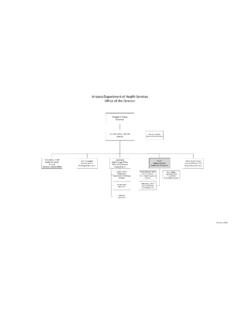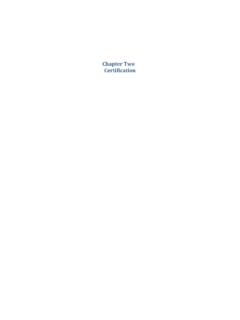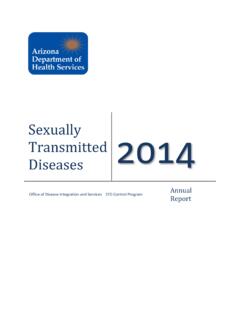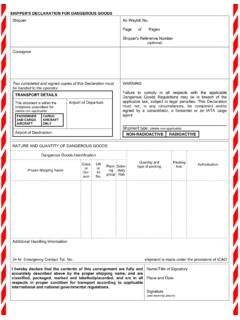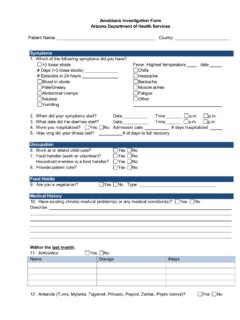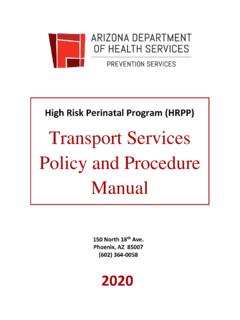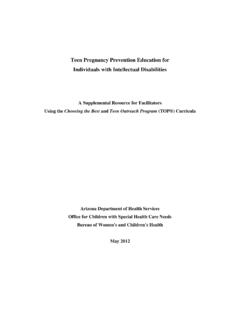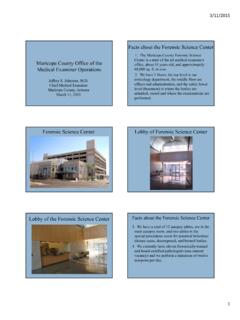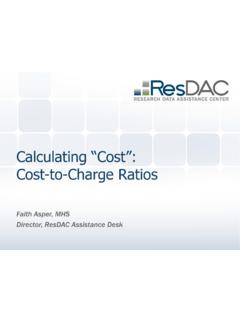Transcription of Weighting Least Square Regression
1 Weighted Least Square RegressionDefinitionEach term in the weighted Least squares criterion includes an additional weight, that determines how much each observation in the data set influences the final parameter estimates and it can be used with functions that are either linear or nonlinear in the Least Square RegressionOne of the common assumptions underlying most process modeling methods, including linear and nonlinear Least squares Regression , is that each data point provides equally precise information about the deterministic part of the total process variation.
2 In other words, it is assumed that the standard deviation of the error term is constant over all values of the predictor or explanatory variables. This assumption, clearly does not hold, even approximately, in every modeling : NIST, Section Least Square RegressionOne of the common assumptions underlying most process modeling methods, including linear and nonlinear Least squares Regression , is that each data point provides equally precise information about the deterministic part of the total process other words, it is assumed that the standard deviation of the error term is constant over all values of the predictor or explanatory variables.
3 This assumption, clearly does not hold, even approximately, in every modeling : NIST, Section a weighted fit, less weight is given to the less precise measurements and more weight to more precise measurements when estimating the unknown parameters in the weights that are inversely proportional to the variance at each level of the explanatory variables yields the most precise parameter estimates : NIST, Section a weighted fit, less weight is given to the less precise measurements and more weight to more precise measurements when estimating the unknown parameters in the weights that are inversely proportional to the variance at each level of the explanatory variables yields the most precise parameter estimates.
4 NIST, Section , describes variance as the difference between the observed instrument response for the ithcalibration standard and the predicted or calculated response for the ithcalibration the sum of the squares of the differences may significantly improve the ability of the Least Square Regression to fit the linear model to the : SW846, 8000C, Section , Revision 3, March 20038000C, describes variance as the difference between the observed instrument response for the ithcalibration standard and the predicted or calculated response for the ithcalibration the sum of the squares of the differences may significantly improve the ability of the Least Square Regression to fit the linear model to the : SW846, 8000C, Section , Revision 3, March 2003 wi(yi-y i)2where.
5 Wi = Weighting factor for the ithcalibration standard (w=1 for unweighted Least Square Regression )yi = Observed instrument response for the ithcalibration standardy I = Predicted (or calculated) response for the ithstandard = The sum of all individual valuesRef: SW846, 8000C, Section , The mathematics used in unweighted Least squares Regression has a tendency to favor numbers of larger value over numbers of smaller value. Thus the Regression curves that are generated will tend to fit points that are at the upper calibration levels better than those points at the lower calibration : SW846, 8000C, Section Examples of Weighting factors which can place more emphasis on numbers of smaller value are:wi = 1/yior wi= 1/yi2 where,wi= Weighting factor for the ithcalibration standard (wi=1 for unweighted Least squares Regression ).
6 Yi=observed instrument response (area or height) for the ithcalibration : SW846, 8000C, Section Different Types Of WeightsNo Weights:Default higher Weighting of higheramounts or signal values 1/Amount:Nearly cancels out the Weighting of higher amounts1/Amount^2 :Causes over-proportional Weighting of smaller amounts1/Response:Nearly cancels out the Weighting of higher signal valuesRef: Chromeleon ManualWeights Cont.:1/Response^2: Causes over-proportional Weighting of smaller signal values1/RSD:Weights signal values with small relative standard deviations more than those with large relative standard deviations1/RSD :Weights signal values with small relative standard deviations clearly more than those with large relative standard : Chromeleon ManualBenefitsWeighted Least squares is an efficient method that makes good use of small data sets.
7 It also shares the ability to provide different types of easily interpretable statistical intervals for estimation, prediction, calibration and main advantage that weighted Least squares enjoys over other methods is the ability to handle Regression situations in which the data points are of varying , Section Least squares is an efficient method that makes good use of small data sets. It also shares the ability to provide different types of easily interpretable statistical intervals for estimation, prediction, calibration and main advantage that weighted Least squares enjoys over other methods is the ability to handle Regression situations in which the data points are of varying , Section biggest disadvantage of weighted Least squares.
8 Is probably the fact that the theory behind this method is based on the assumption that the weights are known exact weights are almost never known in real applications, so estimated weights must be used instead. The effect of using estimated weights is difficult to assess, but experience indicates that small variations in the weights due to estimation do not often affect a Regression analysis or its : NIST Section biggest disadvantage of weighted Least squares, is probably the fact that the theory behind this method is based on the assumption that the weights are known exact weights are almost never known in real applications, so estimated weights must be used instead.
9 The effect of using estimated weights is difficult to assess, but experience indicates that small variations in the weights due to estimation do not often affect a Regression analysis or its : NIST Section Cont.:When the weights are estimated from small numbers of replicated observations, the results of an analysis can be very badly and unpredictably affected. This is especially likely to be the case when the weights for extreme values of the predictor or explanatory variables are estimated using only a few is important to remain aware of this potential problem, and to only use weighted Least squares when the weights can be estimated precisely relative to one Cont.
10 :When the weights are estimated from small numbers of replicated observations, the results of an analysis can be very badly and unpredictably affected. This is especially likely to be the case when the weights for extreme values of the predictor or explanatory variables are estimated using only a few is important to remain aware of this potential problem, and to only use weighted Least squares when the weights can be estimated precisely relative to one Cont.:Weighted Least squares Regression , is also sensitive to the effects of outliers .
